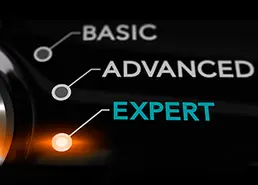Mastering Feature-Based Licenses
After covering the basic settings in the first part of our webinar series and exploring the definition of simple licensing models and key licensing options in the second part, we now turn our focus to modular and feature-based licensing models.
To continue the analogy of a car from the first two webinars, let’s ask ourselves whether we throw our clothes loosely into the car or pack them securely and compactly in a few suitcases in the trunk. For simple trips, placing a jacket on the backseat might suffice. For a vacation, however, you’d pack a large suitcase. Many licensing models resemble preparing for a vacation: You pack many clothes (features) into the suitcase (license) and expect everything to arrive intact at your destination.
This brings us to the first important question: What is a license? The individual piece of clothing or the suitcase containing all the clothes? Both approaches are valid:
- If the suitcase is treated as an inseparable unit, it is more common to consider the suitcase as the license and the clothes as features. In CodeMeter License Central, we typically implement this concept using Module Items or, in rare cases, Inseparable Bundles.
- If my spouse and I share a suitcase (to save costs, for example) and then distribute our clothes into two rooms upon arrival, then each piece of clothing represents a license, and the suitcase is merely a carrier. In CodeMeter License Central, we implement this option with Separable Bundles.
For complex software, it is usually the case that a license consists of multiple features. These features are then fixed within the license and can only be used as a unit.
The process of purchasing a license is straightforward: The license is created in CodeMeter License Central with the desired features and delivered to the end user. Similarly, the suitcase is packed and shipped. When moving to another computer (in the analogy, another hotel), the entire suitcase is simply carried over. When the license is returned, the entire suitcase is sent back.
The process of modifying a license has several variations. If you know in advance whose license is to be changed, the old license is simply replaced with a new one. Features can be added, removed, or altered. You send a new suitcase, and the courier ensures that the old suitcase (to be replaced) is automatically returned when the new one is delivered.
More complex use cases arise when users should be able to purchase individual features separately, and everything magically integrates. In this case, you deliver a single piece of clothing, which becomes a fixed part of the suitcase upon receipt. Similarly, a user should be able to return or exchange a single piece of clothing with you.
In this masterclass, we will show you how to address all these requirements using the built-in tools of CodeMeter License Central and CodeMeter License Portal. First, we will outline the fundamental differences between bundles of licenses and nested license structures. Both concepts have their respective strengths. Then, we will discuss which variant is the best solution for specific use cases.
Here is the agenda for this session:
- Recap of Part I – Basic settings
- Recap of Part II – Licensing models
- Differences between Bundles and Module Items
- Use cases for feature-based licensing
- Common pitfalls and best practice tips
- Preview of Part IV: License Borrowing
Join this webinar to learn how to optimally implement your use cases for feature-based licensing with CodeMeter License Central. Discover which common pitfalls to avoid and which options are typically used.








